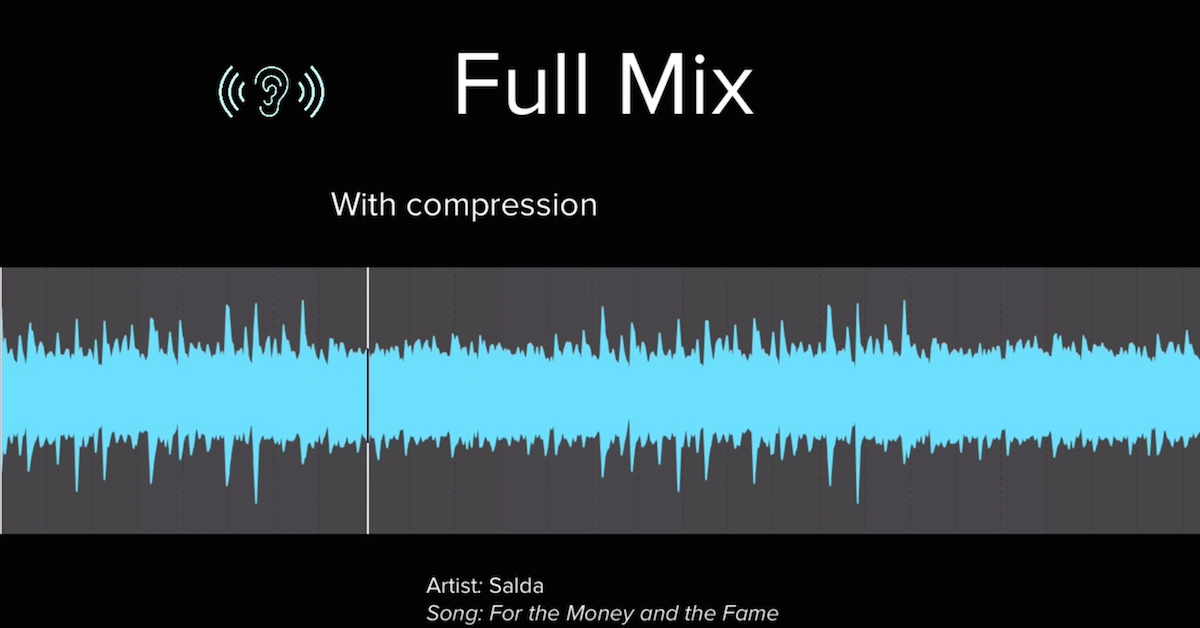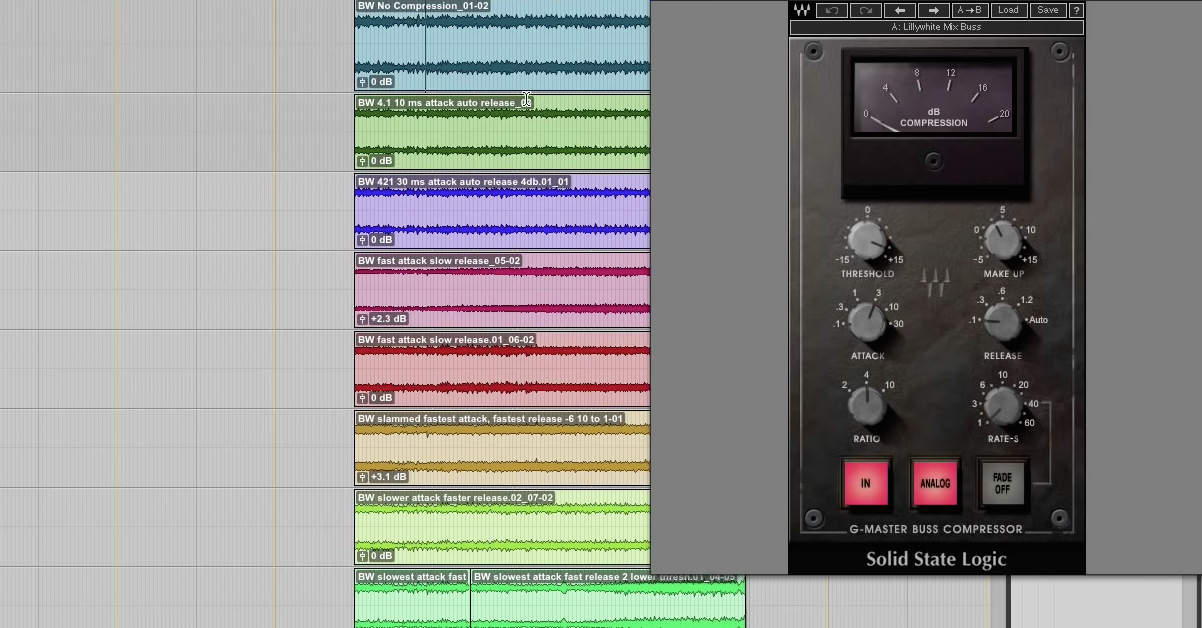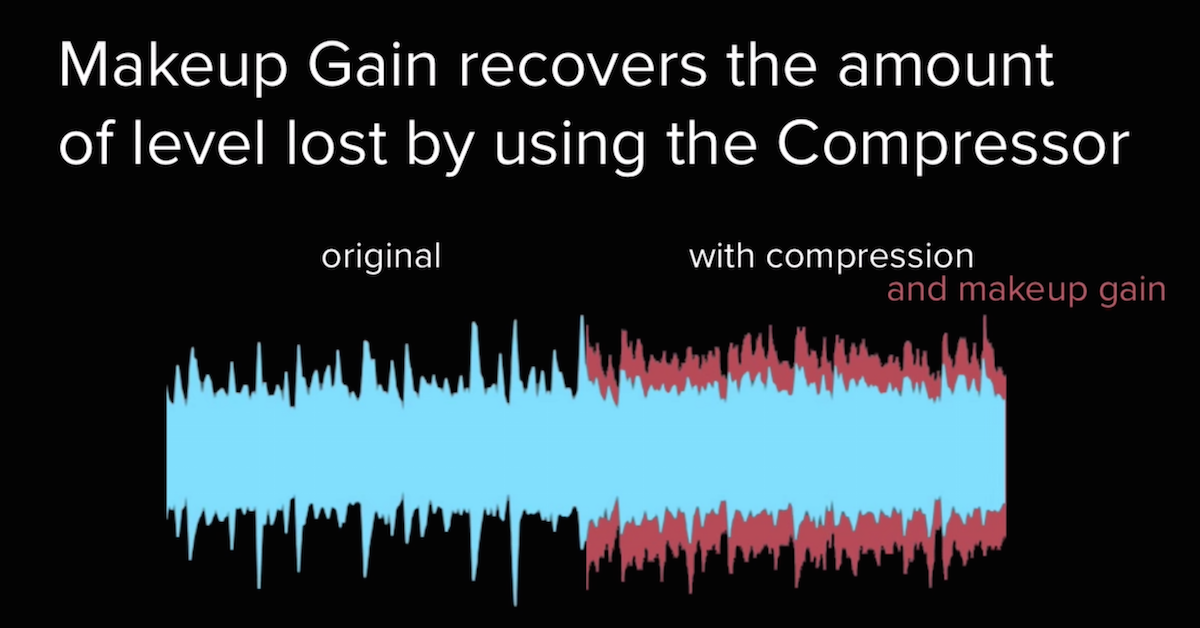What is Compressor Release?
The longer the release time, the longer the compressor holds on to the signal, and the smoother the sound. A faster release means the compressor lets go quickly, and the signal retains more of the original dynamic.
So let’s listen to what that sounds like on a solo instrument. Notice that with a good dose of compression, a long release keeps the level of the note consistent, and we hear more sustain.
[bass guitar, uncompressed, then compressed]
Now listen to a short release, and notice how the sustain of the note changes.
[bass guitar, uncompressed, then compressed, short release, then long]
Now let’s listen to how changing the release time affects the sound of a full mix. As the release time gets longer, listen for the way the drums are less bright or sharp, and you may notice that the pulse or the rhythm of the music seems a little bit less prominent. This is because the compressor doesn’t release between the strong attack of the drums.
[mix, uncompressed, then compressed, short release, then long]
To see release in action, start by setting the compressor with two to three dB of gain reduction. Set the release time to 75 milliseconds, which is the fastest release recommended in most cases. Then gradually increase the release time and listen to the change in the sharpness of your track.






